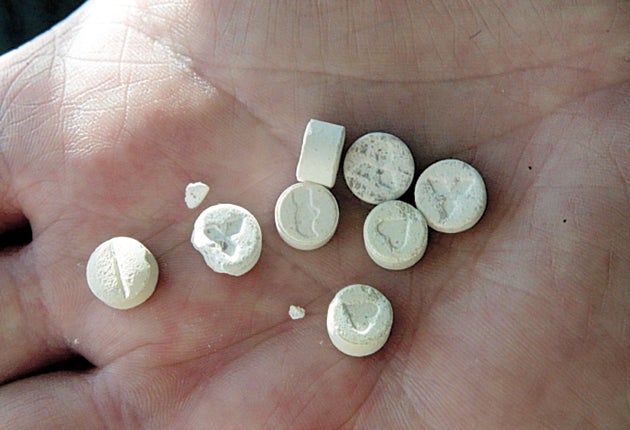Number of people needing treatment for 'club drugs' rises

Your support helps us to tell the story
From reproductive rights to climate change to Big Tech, The Independent is on the ground when the story is developing. Whether it's investigating the financials of Elon Musk's pro-Trump PAC or producing our latest documentary, 'The A Word', which shines a light on the American women fighting for reproductive rights, we know how important it is to parse out the facts from the messaging.
At such a critical moment in US history, we need reporters on the ground. Your donation allows us to keep sending journalists to speak to both sides of the story.
The Independent is trusted by Americans across the entire political spectrum. And unlike many other quality news outlets, we choose not to lock Americans out of our reporting and analysis with paywalls. We believe quality journalism should be available to everyone, paid for by those who can afford it.
Your support makes all the difference.The number of people needing treatment for “club drugs” such as ecstasy, ketamine and “meow meow” is creeping upwards, a new report has found.
Overall drug use has declined in England over the past six years, but the number of people needing treatment for club drugs has risen, the National Treatment Agency (NTA) for Substance Misuse said.
Club drugs are those typically used by people in bars and nightclubs or concerts and parties and include ecstasy, ketamine, methamphetamine, GHB/GBL and mephedrone.
While they cause a treatment problem for a small proportion of people and are unlikely to replace heroin and crack, they can cause serious physical and mental health problems, according to experts.
In a newly-published report, the NTA said club drug users made up 2 per cent of adults in treatment and 10 per cent of young people in specialist services, but the number needing treatment could continue to rise.
The report Club Drugs: Emerging Trends and Risks found that around one million people were estimated to have used club drugs last year (2011/12).
The number of people treated for club drugs was 6,486, up from 4,656 in 2005/06 - with over-18s rising from 3,122 to 4,479 in that period, and those under-18 increasing from 1,534 to 2,007.
Club drug users are often successfully treated, the report found - last year 61 per cent of over-18s and 74 per cent of under-18s using the substances left treatment successfully.
But experts warned that services must remain vigilant and adaptable as new drugs emerge.
NTA chief executive Paul Hayes said: "It is clear that some club drug users are developing serious health problems and even dependency.
"While drug use overall is falling, there is an increase in the number of people turning to treatment for club drugs.
"The numbers remain small compared to heroin and crack addiction, but services need to be geared up to meet these emerging needs.
"For those who do seek treatment, they stand a very good chance of overcoming their problems.
"Many have personal support and resources that put them in a good position to recover.
"We would encourage anyone who is developing a problem to seek help."
The NTA said that although numbers were small compared to heroin and crack, the use of club drugs could lead to significant health problems or a dependency.
Experts interviewed for the report described possible serious health problems, including bladder pain and damage cause by heavy use of ketamine, while some expressed concern over a rise in people injecting mephedrone.
The report found that ecstasy remained the most commonly-treated drug, but mephedrone and ketamine were said to be joining it as popular choices, contributing most to the increase in those being treated for club drugs.
Experts also found that club drug users stood a strong chance of benefiting from treatment because they tended to have the personal resources to battle their problems.
But they said drug treatment services needed to be geared up to meet changing needs as the range of drugs expands.
"This could stay a relatively small problem or it could become more significant," the report concluded.
"Only time will tell."
"It is also possible that some people with a drug problem have not yet found their way into treatment, but services are increasingly alert to the issues these drugs can cause and need to be ready to provide help to anybody who needs it."
It added: "Continued investment in services will be important if this success in adaptation is to be continued with newer substances."
Psychiatrist Owen Bowden Jones, who founded the Club Drugs Clinic at Chelsea and Westminster Hospital, said: "This group of substances can result in harmful effects such as bladder damage and psychosis.
"However, treatment can be very effective and we have seen some excellent results, with people overcoming a range of complicated physical and psychological problems.
"Whilst overall the drug treatment system has made tremendous gains in recent years, particularly in tackling heroin and crack, newer club drug use is a significant challenge and we are still learning the full extent of the resulting harms.
"It is important that investment in services is maintained so that appropriate support is available for those who need it."
PA
Join our commenting forum
Join thought-provoking conversations, follow other Independent readers and see their replies
Comments